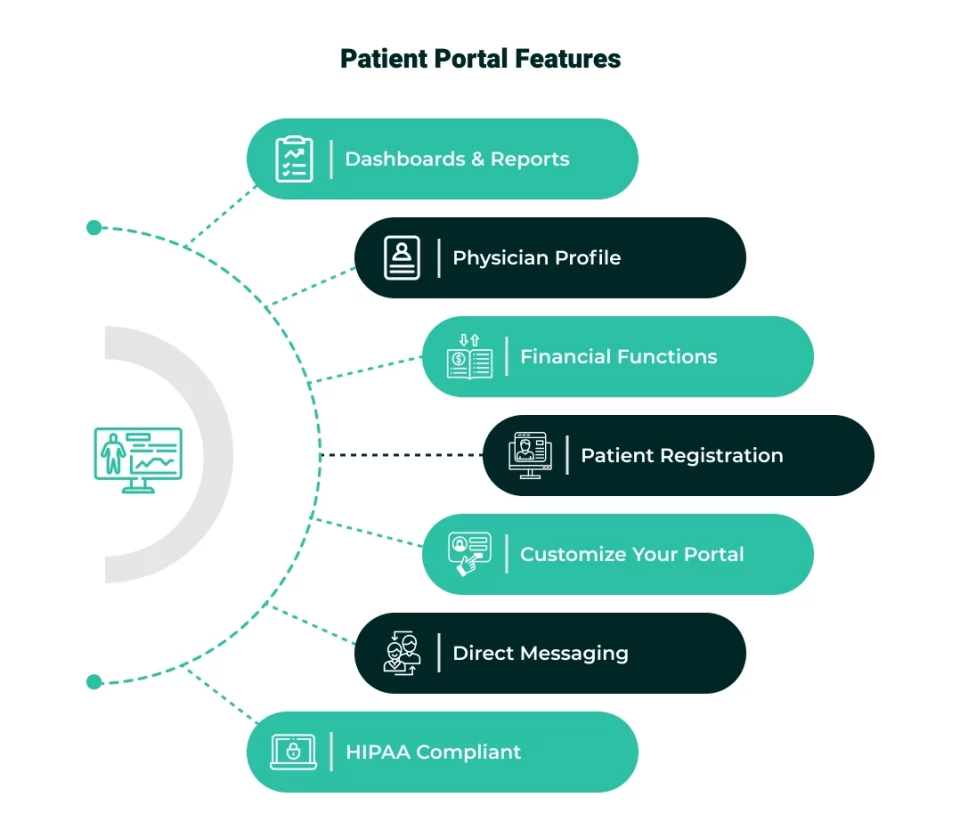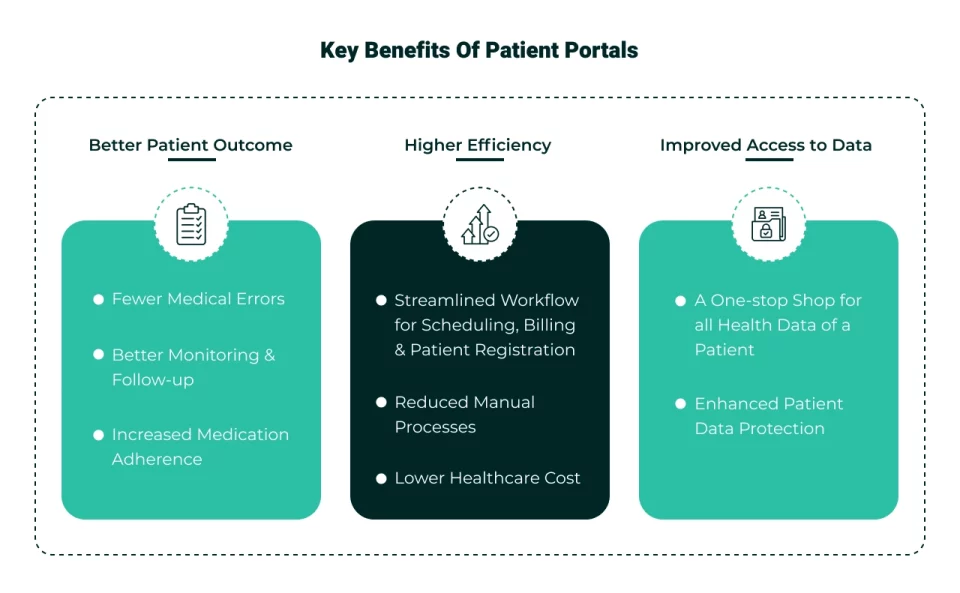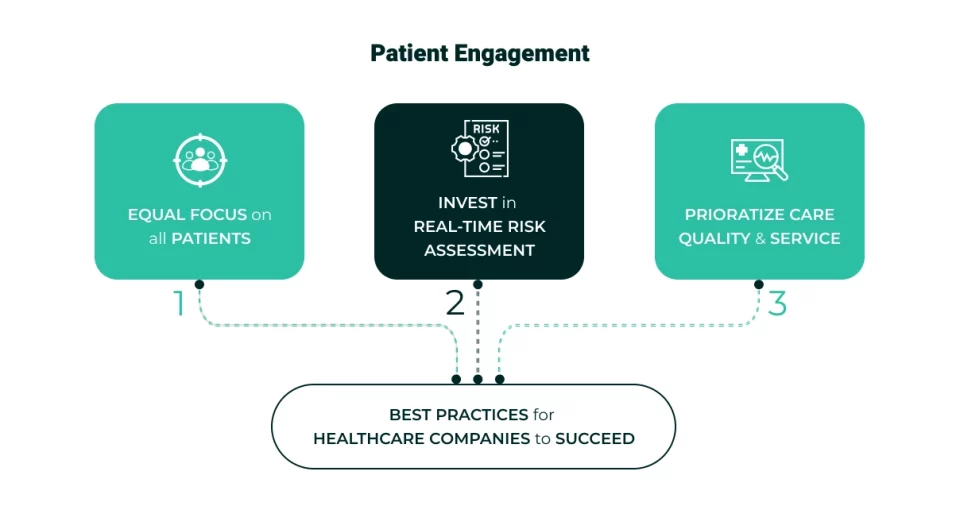INTRODUCTION
The advent of digital patient portals
Health is wealth, and time may be the most valuable commodity. No one wants to waste time or be left waiting when health is in jeopardy. That’s where digital patient portals come in. In recent years, few pieces of the digital health ecosystem have transformed practice environments and medical outcomes as remarkably as patient communication portals.
Patient portals for healthcare improve communication to create a more potent therapeutic alliance between patients and their community health resources. These software tools extend the reach of healthcare organizations and deliver digital acceleration to fuel competitive advantage.
Keep reading to learn more about how digital patient portals transform communication in clinical healthcare and medical practice environments.
SIGNIFICANCE
Importance of developing patient portals for better communication in healthcare
A digital patient portal is a secured application or website that provides patient-consumers with 24-hour access to their personal health information (PHI), opportunities to manage their care and communicate with their medical providers remotely.
Patient portals act as a vital touch point linking patients with community health resources by providing a straightforward and easy-to-interpret information architecture guiding them through available services, providing access to health records, and allowing them to manage their care as needed using modern digital communications and web technologies.
Patient portals offer measurable benefits for healthcare administrators, doctors, and clinical specialists by empowering them to engage with their patients outside the rigid confines of traditional in-person visits or office hours. Healthcare enterprises that deliver innovative patient portals unlock many opportunities to enhance physician-patient engagement, which in turn builds patient trust and loyalty.
Patient portals offer a significant opportunity for healthcare enterprises seeking to innovate and leverage the full potential of digital transformation to drive better medical outcomes for patients and working conditions for their care teams.
Want to know how you can build an interactive patient portal?

Key features of a patient portal comprise patient engagement, personal health information, and communication
FEATURES
Communication features offered by patient portals
Digital patient portals offer a variety of communication features that enhance collaboration between patients and their healthcare providers.
Here are some of the most common communication features offered by medical patient portals and the benefits they offer:
EHR/EMR services: Digital patient engagement tools are often integrated with digital records systems, securely linking patients with their health data.
Virtual care/telemedicine/telehealth solutions: Digital patient portals involve integrated virtual care features that allow patients to conduct safe and secure virtual visits and HIPAA-compliant communications with their providers.
Audio and video-based communication tools: Patient engagement tools have audio and video-based communication features that allow patients and providers to engage in two-way messaging using modern digital methods.
Instant messaging and email tools: Patient engagement tools support sending instant messages and emails between patients and their providers.
Patient registration tools: Patient portals also feature automated patient registration tools to streamline the administrative burden of registering new patients or updating personal details.
Billing resources: Patient portals feature integration with billing tools, allowing providers to send notifications to patients about their medical bills.
Appointment scheduling resources: Patient portals feature resources that enable patients to access scheduling tools to manage their care.
Personal health information resources: Patient portals also provide resources for patients to review their medical diagnoses, check prescriptions, review lab results, and review their physician’s aftercare guidelines, among many other personal health records related to their care.

Customized patient portals can hold many more features that improve patient satisfaction
ADVANTAGES
Benefits of patient communication portals in healthcare
Patient communication tools deliver a massive array of benefits for all stakeholders connected to the community health matrix. Here are some of the most important benefits:
Increased patient engagement drives better medical outcomes
Patient portals make it easier and more convenient for patients to access their personal health information, communicate with clinical teams, and manage their healthcare.
Automated and streamlined clinical workflows improve operational efficiencies
Patient portals optimize administrative tasks by optimizing healthcare operations with IoT and automation.
Patients unlock the true value of person-centered healthcare
Patient portals empower patients to take a more active role in managing their medical care and collaborating with their providers.
Preventative medicine reduces the overall cost of care
Patient portals reduce the overall cost of healthcare dramatically, limiting the need for costly emergency services when less invasive preventative measures are applied sooner.
Digital agility secures competitive advantages
Patient portals match physician and patient expectations today while positioning healthcare enterprises to continue unlocking new profitability through digital innovation in healthcare.
Interested in empowering patients with seamless access to their medical information?

Patient engagement in healthcare is aimed at making resources and services more accessible
POTENTIAL
Communication challenges solved with patient portals
Digital patient portals have the potential to solve communication challenges involving different stakeholder groups connected to the community health system.
Patient consumers love the simplicity and convenience of accessing their health information and communicating with providers using safe and reliable methods.
Patient engagement tools strengthen healthcare organizations by making resources and services more accessible to the general public whenever needed without increasing human capital expenditure.
The popularity of patient portals is borne out by market growth. According to Grandview Research, the global patient portal market size was valued at $2.9 billion in 2022 and is expected to expand at a compound annual growth rate of 19.44% from $3.4 billion in 2023 to reach 11.8 billion by 2030.
North America accounted for nearly 43.8% of the patient portal segment in 2022. This is mainly due to technological advancements in healthcare IT, strong government support, and the compelling use cases patient portals promise.
Here are some of the most impressive communication challenges resolved by digital patient portals:
Strengthens therapeutic alliance between patients and providers: Digital health platforms create new opportunities for patients and providers to communicate and collaborate on care plans.
Delivers 24/7 remote access to digital health tools: Patient portals provide patients with around-the-clock access to their medical records and the opportunity to manage their care whenever is convenient.
Increases patient compliance with medical guidance: Patient engagement with digital portals increases compliance with medical recommendations, leading to swifter recoveries and better outcomes.
Provides safe and secure means to share personal health information: Patient portals offer the same and reliable access to personal health records.
Builds a stronger and more resilient digital health ecosystem: Digital front-door applications extend your organization’s reach, serving as a vital touch-point linking patients and providers in your end-to-end digital health ecosystem.
Unlock true enterprise value: Digital health tools streamline administrative tasks by leveraging automation and digitalization to deliver seamless modern communications capabilities.
Delivers the resources your patients and providers expect: Investing in patient engagement tools offers measurable communication benefits for your patients, staff, and reputation.




